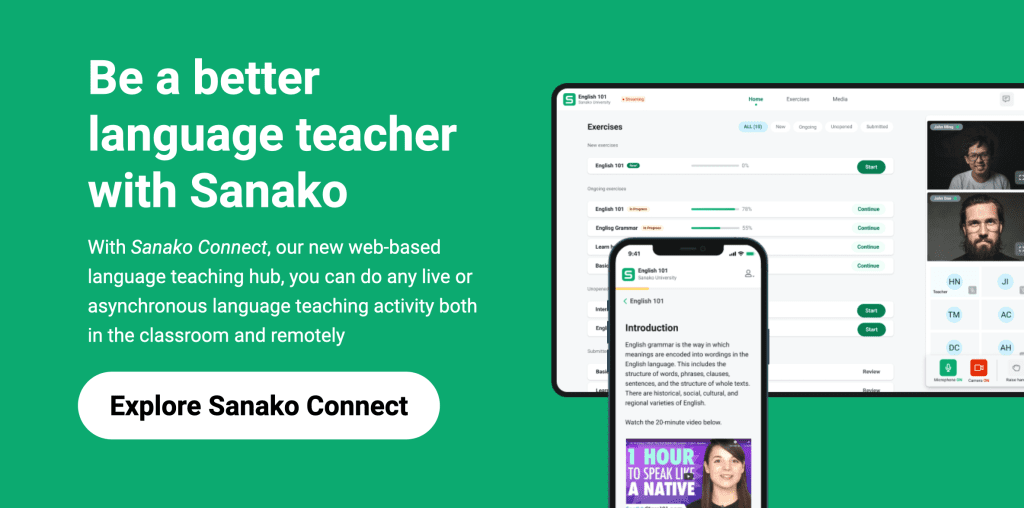Let’s be honest – writing skills really matter! Helping language learners to develop their ability to write clearly and confidently using their target language – whilst using a wide range of vocabulary and grammatical structures – should be a key part of any language curriculum.
Not only do they help students to pass academic tests, strong writing skills can also help students to express themselves accurately and fluently. When using their languages outside of the classroom, effective written communication in formal (e.g. a business email) and informal settings (e.g a letter to a friend) is clearly extremely important. And this all has a positive knock on effect across the other key language skills. Yet for many students, writing tasks are seen as boring and repetitive.
So this blog post pulls together a brief summary of eight top writing tasks to help build students’ confidence and stamina. It also includes some additional ideas for making these tasks engaging and enjoyable for your students.
It might be useful to read this post alongside this one, which looks at the 4 major writing styles all language students need to perfect.
Here are eight of the best tasks to build your students’ writing skills!
- Emails and letters
- Poems and stories
- Short form tasks
- Essays
- Reviews
- Advertisements
- How to guides
- Presentations
1. Emails and letters
These are a classic writing task for students in both first or second languages. The communication’s focus / structure can be easily changed to test the learning objectives that you’re working towards.
Students are given a fictional yet relevant scenario and asked to pen a response. This might include a letter / email to a friend from a holiday or special trip. Alternatively students could be asked to write a letter of complaint about a damaged product or poor customer service they have received.
For adult learners, these tasks could also be tailored to their specific requirements. Helping them to apply for a job, update a CV or communicate with a landlord / employer would all be highly relevant tasks to undertake.
2. Poems and stories
Another classic of the genre and there’s a huge opportunity here for students (and educators) to let their creativity and imagination run wild. Importantly, these tasks can be scaffolded to help less confident students to make progress – writing frames and pre-prepared structures for them to follow are good examples of possible support.
3. Short form tasks
Writing tasks shouldn’t always require students to deliver pages and pages of text. It’s a good idea to mix things up, so occasionally ask students to complete missing words or phrases (i.e gap-fill exercises); to answer specific questions in a couple of sentences or to demonstrate their vocabulary retention in a quick quiz.
Such tasks help develop confidence and build a routine of regular writing practice. They also make the step to writing progressively more challenging content (a sentence to a paragraph to a page) seem more achievable and realistic.
4. Essays
On the other hand, and particularly for older students, essay writing is a specific skill set that students will need to develop. These tasks are invaluable for helping students to put forward an opinion, to support that belief with evidence, to acknowledge (and dismiss) the opposite perspective and usually to persuade the reader to back their position.
Specific lessons and support may, of course, be required to help students write essays in formal exams or test situations.
5. Reviews
Encourage students to share their thoughts on a wide range of culture and / or media. Could they write a review of a book they’ve read, a film they’ve seen or a music track / album that they’ve listened to? Or even get them to review something outside of their comfort zone – a play or a piece of art, for example. Bring out their inner critic and watch their descriptive language flow.
6. Advertisements
The ultimate piece of creative communication! Whether it’s a script for a TV ad or a short tweet, there’s a wealth of opportunities for educators to explore here. Students need to work within a particular context, often within specific limits (e.g word counts or length) and need to make the reader want to do something after reading.
These tasks are also highly tailorable and versatile. Students could respond to a brief about a fundraising event at school, a product or a TV show – the list is endless!
7. How to guides
Recipes, instruction manuals, assembly guides can all be great pieces of written communication. They follow a familiar step-by-step structure and the reader needs to follow them carefully to achieve the desired results.
As such, they can be a great tool to help students learn how to write carefully, precisely and with great detail. It can be fun to get students to swap their writing with a peer to review the process – there’s always something vital that someone forgets to include!
8. Presentations
These can be brilliant ways to build expository and persuasive writing practice as well as equipping students with essential workplace skills. Not only do students build their writing skills, presentation tasks also help them to develop their speaking skills, when they’re asked to deliver the presentation to a peer or group of students.
Tips for creating effective writing tasks for your students
All of the task types outlined above have been selected because of their flexibility – they can easily be used with different ages and different abilities of students. Equally their content can be carefully tailored to meet a wide range of learning objectives. The following three points are worth bearing in mind to make sure these tasks go with a bang!
- Always try to ensure that the writing tasks set and their content / contexts are relevant to the real world. It’s important that students can see the relevance in what they’re being asked to do, so show them how the task could help them communicate outside the classroom. Writing job applications and CVs are great examples of this approach if you are teaching older students.
- Similarly, grammar and vocabulary learning is most engaging when students can both see and apply what they’ve learnt in their regular writing tasks. This is particularly powerful when the task brings together elements that students have been working on across a number of lessons or smaller tasks. Learners feel supported throughout and are clearly able to see the progress that they are making.
- The output for a writing task doesn’t always have to involve a pen and paper. After all, this blog post is a piece of written communication, isn’t it? Think about how students could use digital means to create and submit their work. And play with the constraints of social media (e.g Twitter’s character limit) to harness brevity and creativity in students’ responses.
How Sanako Connect supports students to develop students’ writing skills?
Language educators are easily able to set students tasks that test their writing skills directly in Sanako Connect. This unique cloud-based language teaching platform is highly flexible and enables teachers to upload stimulus material that students can respond to with detailed written answers of any length. It also helps teachers to create quizzes quickly so that they can test students’ spelling and grasp of key grammatical concepts.
There are a wide variety of content authoring tools in Sanako Connect. Teachers can easily create any kind of exercise they need for their lessons. They can also freely mix and match stimulus materials (audio, video, text, presentations, 3rd party websites and content) to give students ample opportunity to tackle the writing tasks outlined above.

